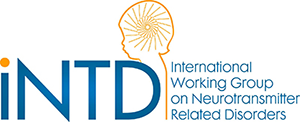JIMD Special Issue
Communication was also the main goal of the conference “Rare-neurotransmitter-related diseases—Research to treatment (RNTD-R2T)” which took place in the city of Belgrade, Serbia, with 184 participants from 24 countries. With funding from the European Joint Programme Rare Diseases (EJPRD) and with the aim of fostering involvement of and exchange between all stakeholders, the conference brought together experienced clinical scientists and basic researchers with Early Career Researchers and patient advocacy organizations. This special issue of the Journal of Inherited Metabolic Disease discusses conference highlights from all three perspectives.
The patient organizations were active contributors to the discussion and, led by Lil’ Brave One and SSADH-Defizit e.V., identified unique challenges associated with the diagnostic odyssey for rare neurotransmitter diseases, assessed the factors contributing to diagnostic delay, and proposed strategies to improve the diagnostic process. They further recognized four main gaps between patients, clinicians and scientists.
Several scientists and clinicians contributed original research and review articles on the topic of neurotransmitter-related disorders. The review focused on a metabolomic perspective involving succinic semialdehyde (SSADH) deficiency. Within the manuscripts on clinical research Yildiz et al. added hyperprolactinaemia-related findings such as levodopa-refractory hyperprolactinaemia, or abnormal pituitary findings to the current knowledge of the phenotypic spectrum of inherited disorders of biogenic amine metabolism. Julia-Palacios broadened the phenotypic spectrum of SSADH deficieny, expanded the number of pathogenic variants and emphasizes a reliable application of in silico approaches.
Another focus was new treatment approaches. Roubertie et al. outlined the standards and requirements for the preparation, management and follow-up of patients with AADC deficiency who undergo gene therapy, while Lee et al. summarized the current state of gene replacement therapies in SSADH deficieny. An outlook on new therapy options is also provided by Noguero with reference to the stabilization of tyrosine hydroxylase (TH) and tyrosine hydroxylase deficiency phenotypes by tetrahydrobiopterin, while the development of precision therapies for rare inborn errors of metabolism, with special attention on drug repurposing and cell culture models is summarized by Didiasova et al.
An extensive characterization of pathogenic variants in TH cells including expression, localization and stability together with their physical interaction with GTP cyclohydrolase 1 provides the basis for identification of novel molecules and other approaches to treat the disorders dependent on these proteins. The issue also reports the development of mouse models for monoamine neurotransmitter disorders and the metabolic characterization of neurogenetic disorders involving the glutamatergic neurotransmission.
Notably, as a consequence of the RNTD-R2T Conference, a Young Scientist Forum on neurotransmitter disorders occurred in Verona (September 2023) dedicated to the new generation of clinicians and scientists, whose clinical and research focus is related to inborn neurotransmitter diseases. The scientific forum was coupled to training in communication with each other and patient advocacy groups, to transmit scientific messages clearly and efficiently.
Altogether, this special issue presents a wide collection of contributions on inherited neurotransmitter diseases, encompassing patient, clinical and basic science perspectives. It underlines the challenges, the latest developments and the innovations in therapies and highlights the importance for communication to inspire and foster future research and clinical studies.

